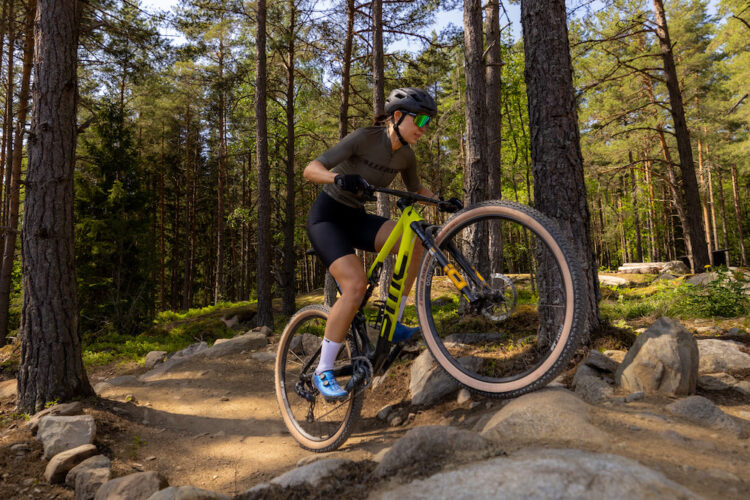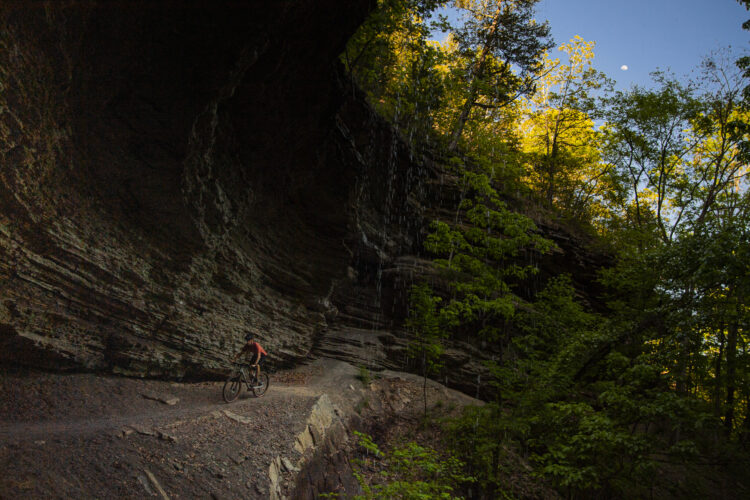
Being a recent transplant to Colorado, I’ll admit that until last month, my knowledge of Gunnison County consisted mainly of the (super, awesome) mountain bike mecca of Crested Butte. While the age-old argument regarding whether Marin County, California or Crested Butte is truly the “birthplace of mountain biking” rumbles along in the background, it is important to note that Charles Darwin and Alfred Russell Wallace both theorized about natural selection at virtually the same moment, though only one of them has secured a place in history. For my own good, I’ll not say which is Darwin and which Wallace is in this analogy.
The Gunnison-Crested Butte Tourism and Prosperity Partnership (TAPP), invited cycling journalists from six esteemed publications to discover what Gunnison has to offer outside of Crested Butte. In a word — alot. Yes, I know that’s not a word, but if I had said “gravel” would you still be reading? I mean, this publication is called SINGLETRACKS(.com), right? A gravel road is kinda the opposite. That being said, this cranky bike journalist is finally ready to admit that gravel riding is not just a fad, not just a cynical bike industry sales ploy, and probably not even dumb.
Gunnison County has over 1,169 miles of lightly used dirt roads snaking through draws, valleys and swells, over tree-lined and treeless passes, around lakes and reservoirs, beside creeks, rivers, and streams–and that’s just on National Forest Service lands. TAPP’s goal with this trip was to showcase Gunnison County as an untapped recreational resource for the outdoorsy set—the kind of visitor who appreciates the natural beauty of this place, and one who might leave a light footprint — while also spending a bit of money. If you’ve mountain biked Crested Butte in the (very short) high season, you’ll probably agree that more tourists (of any type) are not needed in this tiny mountain town. TAPP’s instinct to disperse visitors feels like the right path.
Base camp for our three days of discovery was Campfire Ranch, a private campground owned by the City of Gunnison and leased to a private operator. The craggy, red spired scant handful of acres along the Taylor River canyon were deeded to the City by President Coolidge in the 1920s on a scrap of paper that has stood the test of time (and lawyers). Several notches up from dispersed or public camping, Campfire Ranch is tent-only, blissfully RV-free, provides abundant firewood with your reservation, and you can rent anything from a Yeti cooler to a pad to a tent. Oh, and they greet you with a beer.

Day one was a 55-mile mix of road and gravel up the Taylor Canyon and alongside Spring Creek. Moving from the glass-like surface of the pavement to even the most moderate washboard had me once again questioning the wisdom of this medium. Even on a high-end beauty like the Revel Rover, how is one expected to achieve the zen-like state of road riding when your fillings are at risk of falling out? Fortunately, I have a short attention span and the “Silent Spring” resort caught my eye and incited a chuckle (Silent Spring by Rachel Carson, published in 1962, alerted the world to the dangers of pesticides and was considered the genesis of the environmental movement). It seemed like the equivalent of naming a bike The Crashmaster, or a zoo lion “Killer.”

Returning my focus to the road ahead, I realized that 15 miles had slipped by. It’s like when you fuss and fret about the fact that you are not sleeping, and then you wake up, remember a dream, realize you were sleeping. In that vaguely fugue-like state, the west in its glorious vastness had seeped in. A steady drip of sage, rustic barns, crooked fences, cows and horses doing cow and horse things carried me along for an additional 20 miles.
Why does this landscape make me vaguely sad and nostalgic, yearning for a past that was never mine? I consider myself way too pragmatic to be caught up in the romanticization of the lonely American cowboy narrative, the glorification of ranching, hardscrabble plucky dirt farming — I’ve had a glimpse of that life. It is more hard than romantic. And yet…riding these backroads with broken barns, doors askew, hint of faded red behind sprigs of pale green grasses produces just such a feeling. A fellow rider and journalist said she felt as though she were riding through a lucid dream. The Gravel Cyclist, in his sharp and eternally buoyant Aussie accent described the views, the landscape, and the riding as “mental” (translation: really, really good mate).

And from this reverie I was bounced, my lower jaw meeting upper with a sharp crack, my tongue barely escaping the internal chopping block. Attention must be paid. Our ride leader and host extraordinaire, Eric Larsen, warned us about the cattle guards along the route (strangely, they were often smoother than the surrounding roadway), prompting a funny aside.
“Did you hear about when Bill Clinton was president? At a meeting when someone referenced all of the cattle guards in the West, he inquired why the hell the feds were paying so many people to guard cattle!”
I about fell off my bike. Sadly, upon further research, this story appears to have started as a spoof in the Billings Gazette. The story then was reprinted with authenticity in the Newcastle Reporter and the New Mexico Stockman Magazine.
“Enthusiastic editors, entranced by the story and either unwilling or uninterested in verifying the facts, reported the revelation as accurate. In truth, there is no evidence President Clinton ever ordered the firing of cattle guards…” wrote The East Oregonian in 2018.

Days two and three provided equal to the task—Blacksage Pass at 9,745 feet giving the heart and lungs something to ponder, ripping descents made slightly less ripping by my over-application of brakes due to a fear of becoming a rolling dirt/metal/carbon mass at 30+ mph (who are we kidding I was doing 18, tops). Passing through Ohio City—a not-quite-ghost-town, was an artsy photographer’s dream, and dropping down into the Blue Mesa in Curecanti National Recreation Area, it looked like we were heading for a big, wet wallop. The gravel gods smiled upon us and we finished day three deluge-free.
If your soul seeks some Western solace, and you’ve been thinking about giving gravel a go, Gunnison County has what you’ve been yearning for, but didn’t know you needed. I “needed” 129 miles and 7,500 feet of gravel like a hole in the head, but now I can’t stop thinking about it. Many thanks to Gunnison-Crested Butte TAPP and Eric Larsen for showing us the other side of Gunnison.
Day 1–Spring Creek 55 miles, 3,147′, mostly gravel, completely awesome (Strava and Ride with GPS disagree here re: miles but I rode it and it was 55 not 48. So there).
Day 2–Sargents to Middle Quartz 39 miles, 2,926′. Ghost towns, creeks, crests, views, views, views.
Day 3–Cochetopa Dome to Blue Mesa 63 miles, 3448′. Due to weather constraints, our actual Day 3 ride was shorter than this, but if you have a chance, do this full route!
See the Gunnison Crested Butte website for additional gravel riding information and routes.







Great article Maureen! I had a blast pedaling with ya through the gravel lucid dream. 🙂 Cheers to all your next adventures!
Fantastic article read by someone (me) who has been closed-minded about gravel bikes!
Lorna Forbes
Hey Lorna! Thanks! Me too!
Way to go, Maureen! What a great experience to share with us.
My experiences are a little less G in front of the camping thing, with high country backcountry bikepacking. The Forest Service roads are very similar.
My gravel bike is a 2016 RSD Sergeant V1 that changes shoes for the deed. Love the 3.0 tire experience.
Admission: I still have a hankering for a Salsa Fargo…
Yeah, my experiences are usually a little less glampy as well–one of the things that made this experience so unique and cool! However, I won’t need that part of it to make me go back and ride those roads again. Just absolutely stellar.
From what was described, it looks like a lovely experience in many ways. Location and scenery is unique and lends so much to it.
I have thought about the hut trips over in Utah, since I can be somewhat lazy about some aspects of it and focus on riding my bike.